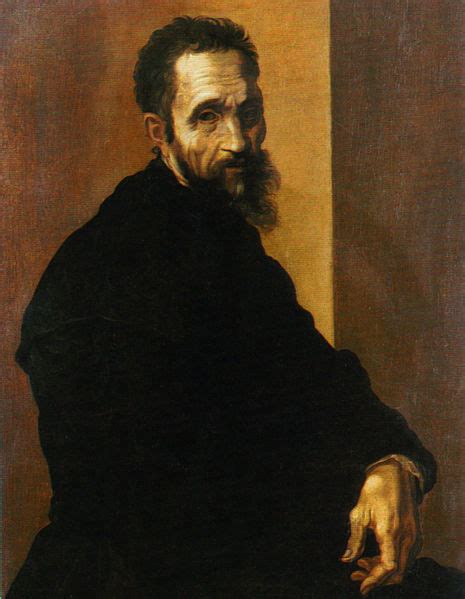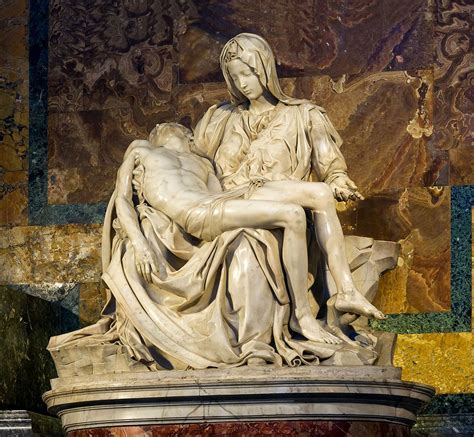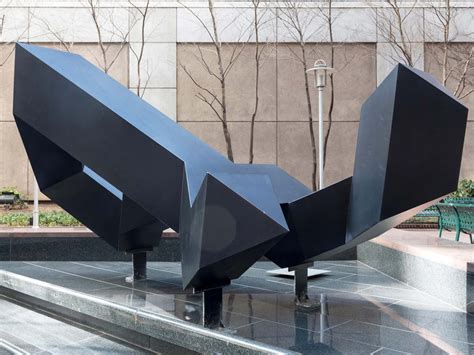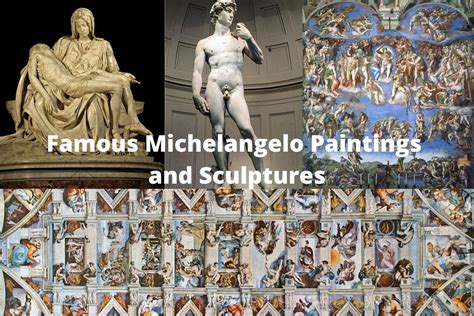Throughout history, there have been individuals who have left an indelible mark on society through their extraordinary talents and boundless creativity. One such luminary, the subject of our exploration, is widely regarded as an icon of the Renaissance era. A sculptor, painter, and architect, his name has become synonymous with beauty, genius, and timeless artistry.
As we delve into the enigmatic life and captivating oeuvre of this distinguished craftsman, we shall unravel the struggles, triumphs, and relentless pursuit of perfection that defined his career. Let us embark on a journey through time, tracing the evolution of his artistic vision, and discovering the myriad masterpieces that have come to shape the realms of both sculpture and painting.
Immersing ourselves in the world of this artistic genius, we shall witness his unwavering commitment to his craft, a fervent dedication that propelled him towards the summit of artistic achievement. With each stroke of paint and chisel on stone, he breathed life into his creations, capturing the essence of humanity, spirituality, and the profound beauty of existence itself.
Early Years and Education of Michelangelo Buonarroti

In this section, we will explore the formative years and educational background of the renowned Italian artist and sculptor, Michelangelo Buonarroti. Delving into his early life, we will uncover the influences and circumstances that shaped his artistic journey.
One cannot overlook the significance of Michelangelo's upbringing in Florence, where he was exposed to the vibrant atmosphere of the city's artistic and intellectual circles. Growing up during the Renaissance period, he witnessed a flourishing of creativity and innovation, which undoubtedly left a lasting impression on his artistic development.
Despite being born into a notary family, Michelangelo displayed a strong inclination towards the arts from a young age. Recognizing his talent and passion, his father reluctantly agreed to apprentice him to the well-respected painter, Domenico Ghirlandaio. Under Ghirlandaio's mentorship, Michelangelo honed his skills and acquired a solid foundation in the techniques of painting and fresco.
However, Michelangelo's insatiable curiosity and ambition pushed him to delve deeper into the world of art. He sought out the guidance of influential figures such as Lorenzo de' Medici, the ruler of Florence, who recognized his extraordinary potential and became his patron. Through Medici's support, Michelangelo gained access to the city's renowned art collections and was exposed to the works of great masters, including Donatello and Ghiberti, who profoundly influenced his artistic style.
Amidst his apprenticeships and encounters with influential individuals, Michelangelo's thirst for knowledge led him to expand his education beyond the realm of art. He immersed himself in the study of anatomy, architecture, and classical literature, drawing inspiration from the works of ancient Greek and Roman scholars. This multidisciplinary approach not only enriched his artistic repertoire but also enhanced his understanding of the human form, allowing him to infuse his sculptures with unparalleled realism and emotional depth.
As we delve into the early life and education of Michelangelo Buonarroti, it becomes evident that his upbringing, coupled with his insatiable thirst for knowledge, laid the groundwork for his extraordinary artistic career. By exploring the influences and experiences that shaped his formative years, we gain a deeper appreciation for the genius that Michelangelo would later become.
The Influence of the Renaissance on Michelangelo's Artistic Style
The era known as the Renaissance had a profound impact on the artistic style of the renowned Italian artist, Michelangelo. This period of cultural and intellectual rebirth sparked a revival of interest in classical art and ideals, leading to a significant transformation in Michelangelo's approach to his craft.
During the Renaissance, there was a renewed emphasis on humanism, the belief in the worth and potential of the individual. This philosophy deeply resonated with Michelangelo, inspiring him to explore the human form in ways that were groundbreaking for his time. Through his skillful use of proportions and anatomical accuracy, he sought to capture the essence of the human experience, celebrating the beauty and complexity of the human body.
Another key aspect of the Renaissance that greatly influenced Michelangelo was the revival of ancient Roman and Greek art. As the rediscovery of classical sculptures and texts took place, artists like Michelangelo became captivated by the elegance and grace of these ancient works. This newfound appreciation for classical aesthetics can be seen in Michelangelo's sculptures and paintings, which often featured idealized figures reminiscent of the classical tradition.
Furthermore, the Renaissance fostered an environment of artistic patronage, with powerful individuals and institutions eagerly supporting and commissioning works of art. This enabled Michelangelo to immerse himself fully in his craft, dedicating years to monumental projects such as the Sistine Chapel ceiling and the marble statue of David. The support and encouragement he received during this period allowed him to push the boundaries of his artistic abilities and create truly monumental masterpieces.
| Impact of Renaissance on Michelangelo's Artistic Style |
|---|
| Emphasis on humanism |
| Influence of classical art |
| Growth of artistic patronage |
The Masterpieces: David, Pietà, and Sistine Chapel

In this section, we explore some of the most renowned artworks created by the legendary Italian artist from the Renaissance era. These masterpieces have left an indelible mark on the art world, showcasing Michelangelo's unparalleled skill and artistic vision.
One of Michelangelo's most iconic works is the sculpture of David. This monumental marble statue stands tall, representing the biblical hero who defeated the giant Goliath. The perfection of David's anatomy, the sense of tension captured in his pose, and the intricate detailing of every muscle highlight Michelangelo's exceptional ability in sculpting the human form.
Another masterpiece by Michelangelo is the Pietà, a sculpture depicting the Virgin Mary cradling the lifeless body of Jesus. The emotional intensity and the delicate expressions on both figures evoke a profound sense of grief and piety. Michelangelo's extraordinary craftsmanship and attention to detail become evident through the flowing drapery, the serene facial features, and the overall harmony of the composition.
The Sistine Chapel ceiling, undoubtedly one of Michelangelo's most ambitious projects, is a breathtaking fresco that portrays various biblical scenes and figures. The intricate design and intricate details of the paintings, such as the creation of Adam and the Last Judgment, demonstrate Michelangelo's mastery of fresco technique and his ability to depict complex narratives in a visually captivating manner.
- David: An awe-inspiring representation of the biblical hero
- Pietà: A poignant portrayal of motherly love and divine sacrifice
- The Sistine Chapel: A celestial masterpiece that transcends time
These masterpieces serve as testaments to Michelangelo's profound artistic genius and his ability to express deep emotions and complex concepts through his work. They continue to inspire awe and admiration in viewers from all walks of life, cementing Michelangelo's legacy as one of the greatest artists in history.
Michelangelo's Connection with the Catholic Church
Throughout his illustrious career, the eminent Renaissance artist Michelangelo enjoyed a close and multifaceted relationship with the Catholic Church. His artistic endeavors were deeply intertwined with his religious beliefs, as he created numerous masterpieces that showcased his devotion, skill, and profound understanding of theological concepts.
One of the most significant aspects of Michelangelo's connection with the Catholic Church was his involvement in various Vatican commissions. The Church recognized his exceptional talent and sought his expertise for several renowned projects, including the breathtaking ceiling frescoes of the Sistine Chapel. These divine artworks not only adorned the holy space but also served as a visual representation of the Church's teachings, inspiring and enlightening the faithful.
In addition to his artistic contributions, Michelangelo's spiritual convictions played a crucial role in shaping his work. His deep faith was evident in his sculptures, paintings, and architectural designs, which often depicted biblical scenes and religious symbolism. Through his art, he aimed to convey profound religious truths, provoke contemplation, and foster a deeper understanding of Catholic doctrine.
Furthermore, Michelangelo's connection with the Catholic Church extended beyond his artistic endeavors. He maintained close relationships with various popes and clergy members, who admired his talent and sought his counsel. In fact, the artist's faith was so strong that he received the tonsure, an official induction into the Catholic clergy, despite not taking on any religious duties.
| Key Aspects of Michelangelo's Relationship with the Catholic Church |
|---|
| Participation in Vatican commissions |
| Depiction of religious themes in his artworks |
| Close relationships with popes and clergy |
| Clovertonsure |
The Multi-Talented Artist: Sculptor, Painter, and Architect

While exploring the remarkable artistic journey of one of history's most celebrated figures, it becomes evident that Michelangelo possessed an extraordinary range of talents and expertise. This section focuses on unraveling the multifaceted nature of his artistic pursuits, highlighting his mastery as a sculptor, painter, and architect.
Michelangelo's sculptural genius was unparalleled, as he breathed life into marble and stone, showcasing his ability to capture the human form in its purest essence. With chisel in hand, he imbued his sculptures with a sense of dynamic energy, effortlessly sculpting figures that appeared to emerge organically from the very blocks of stone they were carved from.
In addition to his profound mastery of sculpture, Michelangelo's prowess as a painter is equally remarkable. Through the medium of paint, he conveyed deep emotional narratives, employing vivid colors and intricate brushwork to depict a wide range of themes and subjects. His brushstrokes brought to life scenes of profound drama, depicting the human experience in all its complexity.
Beyond sculpting and painting, Michelangelo's architectural contributions further emphasize the breadth of his artistic talent. Through his architectural designs, he blended form, function, and aesthetics, shaping the physical spaces in which his sculptures and paintings resided. His visionary architectural plans and structures, such as the magnificent dome of St. Peter's Basilica, stand as testaments to his ability to translate his artistic vision into tangible and enduring spaces.
In summary, Michelangelo's artistic genius spanned multiple disciplines, making him a true Renaissance man of his time. With his sculpting, painting, and architectural mastery, he left an indelible mark on the world of art, inspiring countless generations with his unique ability to bring beauty, emotion, and grandeur to life.
Mirroring Humanity through the Artistry of a Remarkable Renaissance Visionary
Within the majestic masterpieces crafted by a brilliant innovator of the Renaissance era, the essence of humanity is ingeniously reflected. Through the hands of this extraordinary artist, the intricate interplay of human emotion, beauty, and spirituality conveys a profound message that resonates with viewers throughout the ages. This unique fusion of technique, symbolism, and vision allows us to glimpse into the depths of the human experience with raw honesty and unwavering authenticity.
As we delve into the expansive repertoire of this remarkable creative mind, we are transported to a world where every brushstroke whispers truths that transcend time and space. With skilled precision and an unwavering devotion to detail, this artist skillfully combines the elements of light and shadow, form and movement, to breathe life into the figures that grace his canvases. Each stroke paints a story, capturing the fleeting moments of joy, sorrow, love, and longing that define the human condition.
- In his portrayal of spiritual subjects, this ingenious visionary masterfully taps into the interconnectedness of the divine and mortal realms. Through his mastery of composition and symbolism, he presents religious narratives with a profound sense of reverence and awe, inviting viewers to contemplate the mysteries of faith and the eternal truths that bind us all.
- Expressing the complexity of human emotions, this brilliant artist has the unprecedented ability to reveal the depths of the soul. His characters, whether depicted in moments of triumph or agony, bear the weight of their experiences upon their faces and bodies, resonating with viewers on a visceral level.
- Equally adept at capturing the beauty and vulnerability of the human form, this revolutionary artist presents the physical body with a level of realism that astounds. With each chiseled marble sculpture, the artist brings forth the grace, strength, and imperfections that make us inherently human. These magnificent creations inspire introspection and appreciation for the wondrous diversity of the human physique.
Michelangelo's artistic genius knows no bounds when it comes to mirroring the multifaceted nature of humanity. Through his extraordinary ability to infuse his work with depth, insight, and emotion, he lays bare the universal experiences shared by all individuals, regardless of time or culture. Gazing upon his creations, we are reminded of our shared humanity, the collective struggles, and the enduring spirit that unites us all.
Legacy and Influence of Michelangelo in the Art World

In the realm of art, few individuals have left a lasting impact as profound as the incomparable Michelangelo. His artistic prowess and creative mastery have transcended time, leaving an indelible mark on the art world. The legacy he has forged continues to inspire and influence generations of artists, shaping the course of artistic expression.
One cannot deny the profound and enduring influence Michelangelo has had on the world of sculpture. His innovative techniques, meticulous attention to detail, and ability to infuse emotion into his creations have set an unparalleled standard in the realm of three-dimensional art. Many contemporary sculptors still draw inspiration from his works, striving to emulate his ability to breathe life into cold stone and capture the essence of the human form.
Not only did Michelangelo revolutionize sculpture, but he also made significant contributions to the realm of painting. His mastery of brushwork, extraordinary sense of composition, and innovative use of light and shadow have forever changed the landscape of painting. Artists throughout the ages have emulated his techniques, seeking to capture the same sense of dynamism and depth that characterize Michelangelo's works.
Michelangelo's impact extends beyond the realms of sculpture and painting. His artistic vision and unwavering dedication to his craft have inspired countless artists across various disciplines. Architects have drawn inspiration from his grand architectural designs, imbuing their own creations with the same sense of grandeur and harmony. Poets and writers have sought to capture the emotional intensity and spiritual depth found within Michelangelo's works, weaving his themes and ideas into their literary masterpieces.
The influence of Michelangelo can also be felt in the realm of contemporary art. His ability to transcend traditional artistic boundaries and challenge societal norms has inspired artists to push the boundaries of their own creativity. The fusion of classical artistic techniques with modern interpretations can be seen in various art forms today, a testament to Michelangelo's continued relevance and impact in the ever-evolving art world.
In conclusion, Michelangelo's legacy and influence in the art world are immeasurable. His innovative techniques, exquisite craftsmanship, and ability to convey deep emotion continue to inspire artists of all disciplines. From his groundbreaking sculptures to his awe-inspiring paintings, Michelangelo's influence can be felt in every corner of the art world, ensuring his place as one of history's greatest artistic geniuses.
FAQ
What are some notable works of Michelangelo?
Michelangelo created numerous famous works, including the sculptures David and Pieta, as well as the paintings on the ceiling of the Sistine Chapel in the Vatican.
What influenced Michelangelo's artistic style?
Michelangelo was heavily influenced by classical Greek and Roman art, which can be seen in the idealized figures and strong sense of anatomy in his sculptures and paintings. He also drew inspiration from the humanist ideals of the Renaissance period.
How did Michelangelo's personal life impact his art?
Michelangelo's personal life had a significant impact on his art. His devout Catholicism is evident in the religious themes present in many of his works. Furthermore, his troubled relationships and inner struggles are reflected in the emotional intensity and expressive qualities of his sculptures and paintings.



